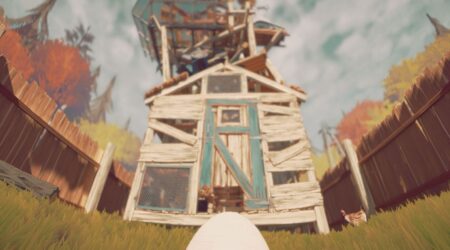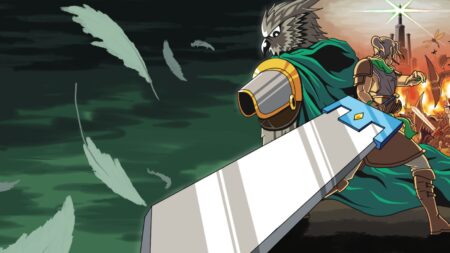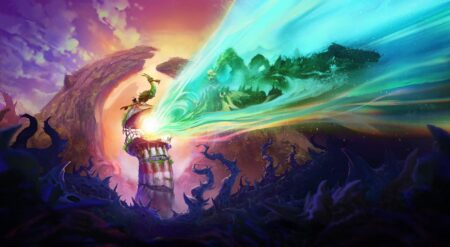Since launching in June of last year, Diablo 4 has continued to grow and be refined through seasonal updates that have introduced new activities, tweaked gameplay systems, and even overhauled the game’s pivotal loot system for the better. The changes have helped rejuvenate the action RPG by pushing players to start new characters and giving them scores of new enemies to slaughter in new and novel ways. But with the release of Vessel of Hatred, Blizzard Entertainment is challenged to show players what they can expect from the yearly paid expansions the developers plan on releasing.
At the center of Vessel of Hatred is the new southern jungle region known as Nahantu. Nahantu is as downright gorgeous as the rest of the game’s map and brings a unique style with it that feels like a breath of fresh air when adventuring in Sanctuary. Players travel to Nahantu in pursuit of Neyrelle after the events of the base game’s story, who is struggling with control over a soulstone with the prime evil of hatred, Mephisto, trapped inside of it. Players are given the option to jump straight to the new expansion story when making a fresh character, and there is a helpful cinematic at the outset to refresh your memory, which is great.
Much like the base game, Vessel of Hatred‘s cinematics is Blizzard Entertainment at their finest. The animation on display is beautiful while keeping the dark tone of the Diablo universe in all of its gory detail. Where the expansion’s story really stumbles, however, is in its dialogue. The expansion’s side characters are all good enough, ranging from adequate to interesting, but the player’s character is where the issues arise.
For some reason, a lot of the player character’s dialogue in Vessel of Hatred feels weirdly tongue-in-cheek or subversive. At points it is almost what one would expect from a Marvel movie and is so anachronistic that it is difficult to see what the developers were going for with it. It is enough to give tonal whiplash and take the player right out of multiple scenes to roll their eyes and let out a groan.

Coming out of Nahantu is also Vessel of Hatred‘s brand-new class, the Spiritborn. Spiritborn are effectively a cross between the series staples of the Druid and the Rogue. They call upon the spirits of jungle animals to augment their abilities while quickly moving around the battlefield to dispatch foes, all with a tribal flare. Mechanically the class plays like a dream. Its abilities are varied but all work together very well. There are clear build options that work well for players who aren’t as interesting in build crafting, but there is enough complexity and variables at play that those who really want to dig into the numbers and keywords will likely have some absurd build options not too long after release.
My only issues with the Spiritborn are that it feels disappointingly familiar flavor-wise when compared to the other classes in Diablo 4 and that it adheres to the standard resource-generation that all the other classes do. It still feels weird that the only class in Diablo 4 that can currently equip shields is the Necromancer, and this would have been a great opportunity to see the return of the Crusader class from Diablo 3.
The Spiritborn also could feel fresher if its resource management systems were a bit more interesting, but instead it is more of what players have come to expect: use skills until resource is dry, mash normal attacks until resource is back, and then repeat until everything is dead. Especially when compared to the new classes coming out of Diablo Immortal, it feels like Vessel of Hatred could have strived for more here.

Outside of the new region and class Vessel of Hatred also packs in a bundle of content and tweaks that is very exciting to see. Leveling has been reworked to give players more options for builds, and every class has gotten a couple of new abilities to mix up their meta. The difficulty system has been reworked to be more akin to Diablo 3 and to give players more options to fine-tune the experience while leveling up in a way that feels very satisfying.
The Mercenary system returns to allow solo players to level up and customize four different NPCs to fight alongside them. And there is a new co-op focused endgame activity that should appeal to all players thanks to its more casual difficulty and weekly leaderboard challenges with special rewards.
Despite some small issues, Vessel of Hatred is a blast to play. Its flagship features, the new campaign in the region of Nahantu and the new Spiritborn class, are both great reminders of what makes Diablo 4 such a great entry in the series, to begin with, even if neither is perfect. But it is the small additions where the expansion really shines. The tweaks to leveling, new party finder system, and a plethora of other fine tunings grant a lot of hope for the future of Diablo 4 since it just keeps getting better.
Diablo 4: Vessel of Hatred releases on October 7 for PC, PlayStation 4, PlayStation 5, Xbox One, and Xbox Series X/S.
Diablo 4: Vessel of Hatred
TL;DR
Despite some small issues, Vessel of Hatred is an absolute blast to play. Its flagship features, the new campaign in the region of Nahantu and new Spiritborn class, are both great reminders of what makes Diablo 4 such a great entry in the series to begin with even if neither is perfect. But it is the small additions where the expansion really shines. The tweaks to leveling, new party finder system, and plethora of other fine tunings grant a lot of hope for the future of Diablo 4 since it just keeps getting better.








